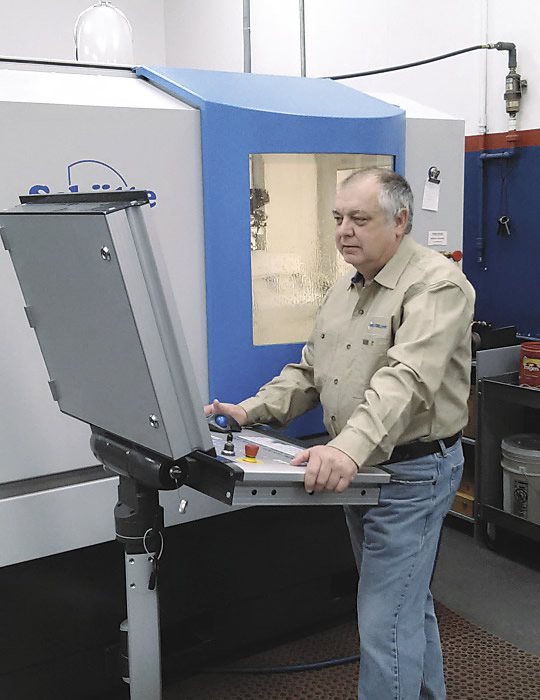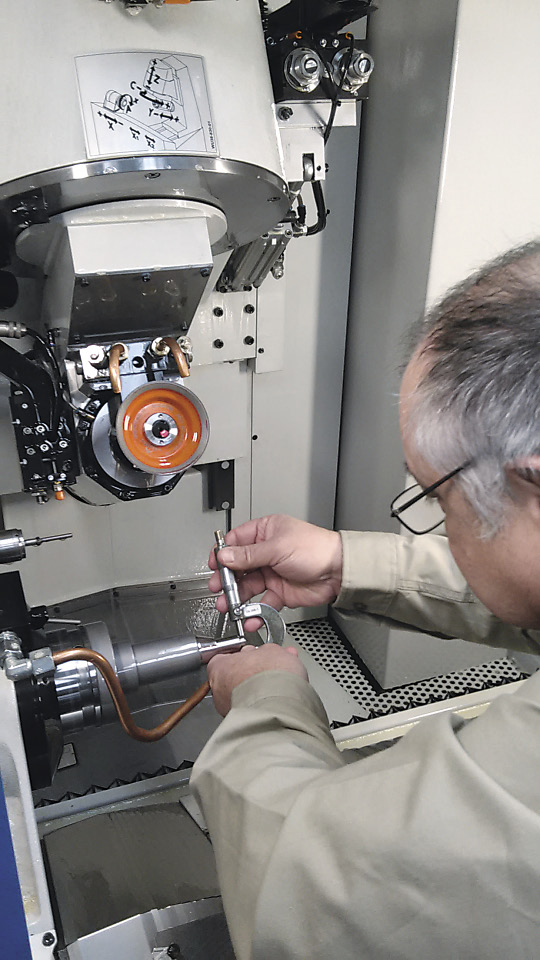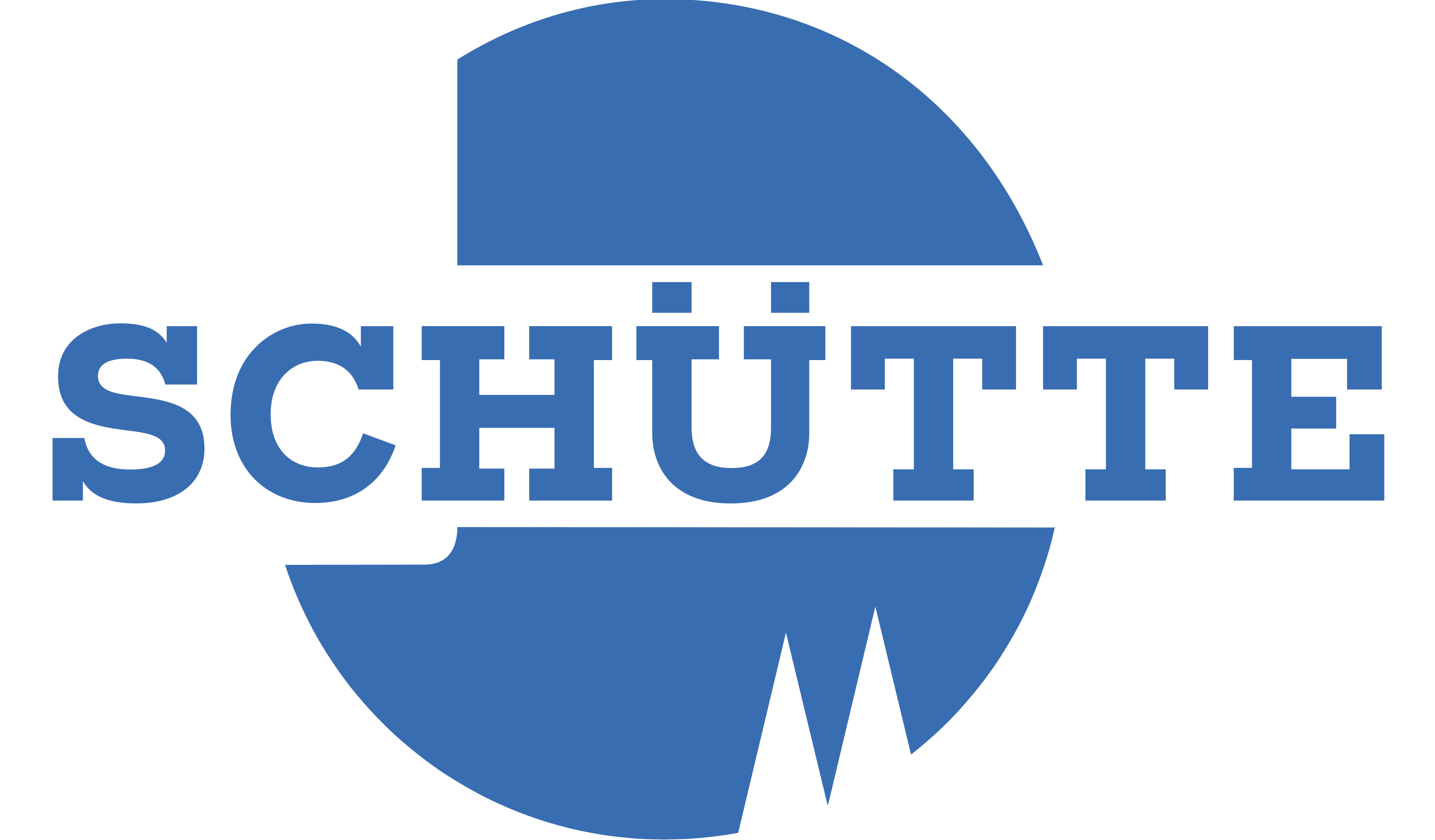-----------------
END USER: Crowley Tool Co., (615) 824-5594, www.crowleytool.com. SOLUTION PROVIDER: Schütte LLC, (800) 668-4035, www.schutteusa.com. CHALLENGE: Enhance reliability when grinding round tools. SOLUTION: A new 5-axis CNC tool and cutter grinder with linear-drive technology.
-----------------
Crowley Tool Co. specializes in designing and manufacturing custom insertable form tools for all makes and models of multiple- and single-spindle screw machines. Crowley Tool, Hendersonville, Tenn., can work from customer part prints and process layouts to produce tools to overcome challenging applications.
The toolmaker does a significant amount of conventional, or manual, grinding to produce inserts. “Because so much of our work is unique, with maybe 20 pieces being a big order for us, we spend considerable time in setup and fixturing time,” said Ed Crowley, company president.


Eddie Boland, Crowley Tool machine operator and toolmaker, says the Schütte 325linear grinder allows him to quickly produce flutes in tools, owing to the subroutines and macros on the machine. All images courtesy Justin Maxey, Crowley Tool.

About 10 years ago, Crowley Tool decided it wanted to make more round cutting tools and saw a 5-axis CNC WU305linear grinding machine from Schütte LLC, Jackson, Mich., at a trade show. The machine was more suitable than the company’s existing equipment for producing round tools, Crowley said, and “It had some amazing features that we knew would make a difference for our operation.”
However, the toolmaker’s budget at the time prevented the purchase of a new grinder, so it opted for a used one instead, he added.
The used grinder enabled Crowley Tool to significantly shorten the time it took to produce a round tool, from about 2½ hours to 30 minutes, but the previous owners hadn’t treated the machine with a lot of TLC, speculated Eddie Boland, a machine operator and toolmaker at Crowley Tool. “I feel like it had been abused,” he said.
As a result, Boland said Crowley Tool experienced reliability issues with the grinder. The toolmaker was able to upgrade the grinding software, but that required replacing the machine’s computer.


Eddie Boland said he appreciates the remote diagnostic ability of the CNC, which allows Schütte support to “look inside” the machine for troubleshooting and cutting path suggestions.

When programming and software questions arose, Schütte software and programming specialist Scott Topa was quick to respond, according to Boland. Topa said, “We have a team of engineers developing specialized grinding software, in conjunction with our CNC supplier, to allow customers the ability to create their own programs and adapt to changing conditions of materials without a problem.”
Boland noted about 60 percent of the tools Crowley Tool makes are carbide and the rest are M-42 and T-15 HSS, with tolerances as tight as 0.0002" (5.1µm).
Eventually, Crowley decided to replace the grinder it bought used and purchase a new Schütte 325linear grinder with the latest generation of SIGSpro grinding software, which together provide modular flexibility. He said the new machine enabled the company to make a significant leap forward in its production capabilities.
“We run some very complex fluting patterns, with ID and OD relief and stepped configurations,” Crowley explained. “Often, our customers require three-, six- and 12-set packages. As a lot of our customers are doing automotive, defense, aircraft, valve stem, connector, transmission and specialized fitting work, they have exceedingly high quality expectations. So do we.”
On the new machine, the grinding software offers a simple, Windows-based menu and onscreen 3D simulation of the cutting path, according to Schütte. Simulations can also be run offline on a PC, increasing machine uptime and eliminating the need for additional simulation software.
Boland said he programs on a PC. He uploads those to the company’s server and then downloads the needed program at the machine into the same software used for creating it.
Although the toolmaker’s previous CNC grinder accommodated 24 grinding arbors while the latest one accommodates only five, Boland said having a larger wheel magazine has benefits but is more temperamental and less predictable than the current one. Each arbor accepts up to three wheels, but, depending on the grinding path, two wheels typically are loaded on an arbor.
The 325linear is much more reliable and “seems to be more solid” than Crowley Tool’s past CNC grinder, Boland said. But when an issue does arise, remote diagnostic capability on the machine’s CNC enables the Schütte team to “look inside” the machine while it’s operating to gauge performance, resolve issues in-process and even make suggestions to the operator about how a particular cutting sequence might be improved.
Contact Details
Related Glossary Terms
- arbor
arbor
Shaft used for rotary support in machining applications. In grinding, the spindle for mounting the wheel; in milling and other cutting operations, the shaft for mounting the cutter.
- computer numerical control ( CNC)
computer numerical control ( CNC)
Microprocessor-based controller dedicated to a machine tool that permits the creation or modification of parts. Programmed numerical control activates the machine’s servos and spindle drives and controls the various machining operations. See DNC, direct numerical control; NC, numerical control.
- flutes
flutes
Grooves and spaces in the body of a tool that permit chip removal from, and cutting-fluid application to, the point of cut.
- fluting
fluting
Cutting straight or spiral grooves in drills, endmills, reamers and taps to improve cutting action and remove chips.
- grinding
grinding
Machining operation in which material is removed from the workpiece by a powered abrasive wheel, stone, belt, paste, sheet, compound, slurry, etc. Takes various forms: surface grinding (creates flat and/or squared surfaces); cylindrical grinding (for external cylindrical and tapered shapes, fillets, undercuts, etc.); centerless grinding; chamfering; thread and form grinding; tool and cutter grinding; offhand grinding; lapping and polishing (grinding with extremely fine grits to create ultrasmooth surfaces); honing; and disc grinding.
- grinding machine
grinding machine
Powers a grinding wheel or other abrasive tool for the purpose of removing metal and finishing workpieces to close tolerances. Provides smooth, square, parallel and accurate workpiece surfaces. When ultrasmooth surfaces and finishes on the order of microns are required, lapping and honing machines (precision grinders that run abrasives with extremely fine, uniform grits) are used. In its “finishing” role, the grinder is perhaps the most widely used machine tool. Various styles are available: bench and pedestal grinders for sharpening lathe bits and drills; surface grinders for producing square, parallel, smooth and accurate parts; cylindrical and centerless grinders; center-hole grinders; form grinders; facemill and endmill grinders; gear-cutting grinders; jig grinders; abrasive belt (backstand, swing-frame, belt-roll) grinders; tool and cutter grinders for sharpening and resharpening cutting tools; carbide grinders; hand-held die grinders; and abrasive cutoff saws.
- high-speed steels ( HSS)
high-speed steels ( HSS)
Available in two major types: tungsten high-speed steels (designated by letter T having tungsten as the principal alloying element) and molybdenum high-speed steels (designated by letter M having molybdenum as the principal alloying element). The type T high-speed steels containing cobalt have higher wear resistance and greater red (hot) hardness, withstanding cutting temperature up to 1,100º F (590º C). The type T steels are used to fabricate metalcutting tools (milling cutters, drills, reamers and taps), woodworking tools, various types of punches and dies, ball and roller bearings. The type M steels are used for cutting tools and various types of dies.
- inner diameter ( ID)
inner diameter ( ID)
Dimension that defines the inside diameter of a cavity or hole. See OD, outer diameter.
- outer diameter ( OD)
outer diameter ( OD)
Dimension that defines the exterior diameter of a cylindrical or round part. See ID, inner diameter.
- relief
relief
Space provided behind the cutting edges to prevent rubbing. Sometimes called primary relief. Secondary relief provides additional space behind primary relief. Relief on end teeth is axial relief; relief on side teeth is peripheral relief.
- sawing machine ( saw)
sawing machine ( saw)
Machine designed to use a serrated-tooth blade to cut metal or other material. Comes in a wide variety of styles but takes one of four basic forms: hacksaw (a simple, rugged machine that uses a reciprocating motion to part metal or other material); cold or circular saw (powers a circular blade that cuts structural materials); bandsaw (runs an endless band; the two basic types are cutoff and contour band machines, which cut intricate contours and shapes); and abrasive cutoff saw (similar in appearance to the cold saw, but uses an abrasive disc that rotates at high speeds rather than a blade with serrated teeth).

